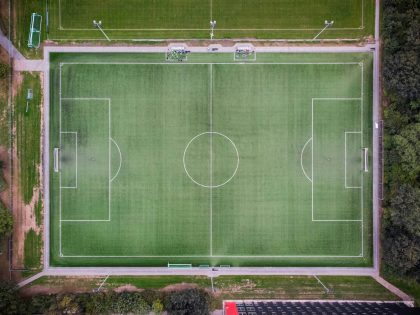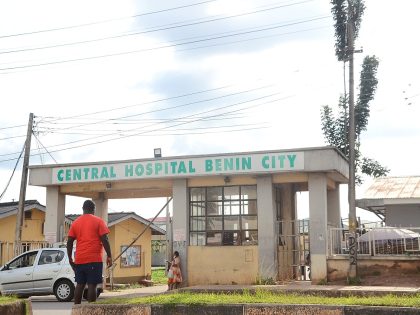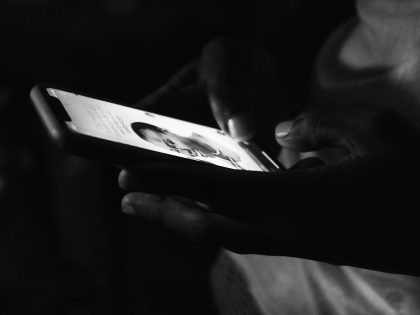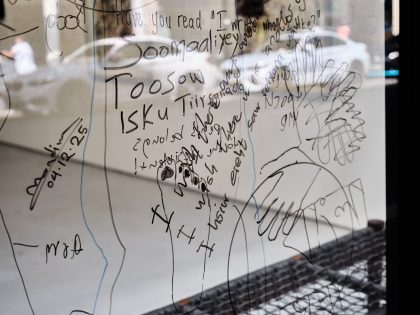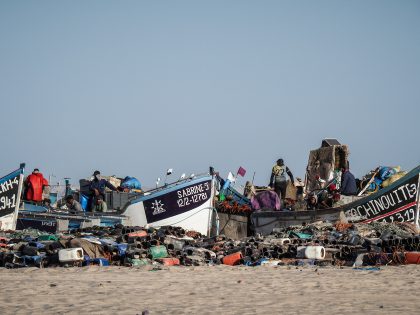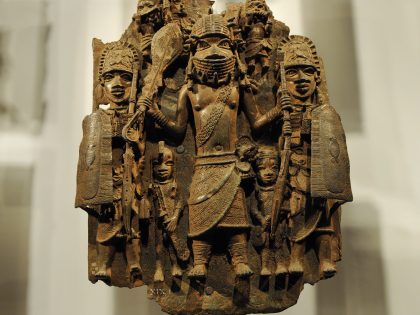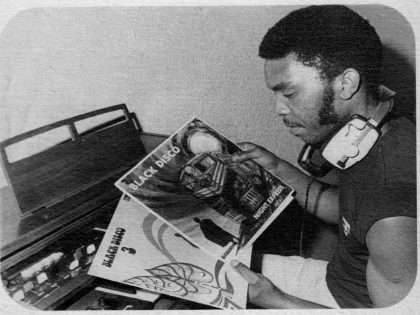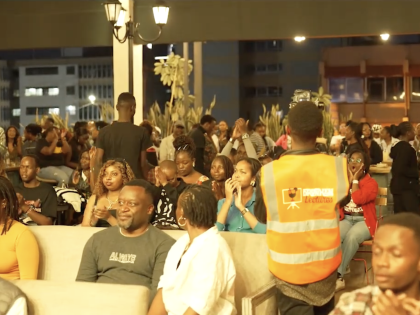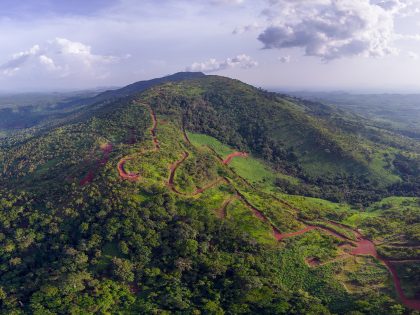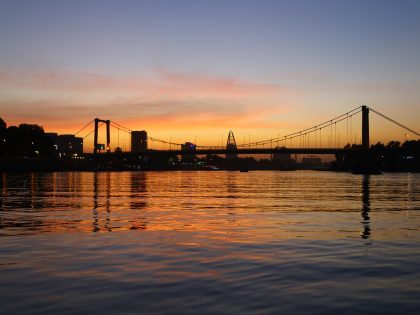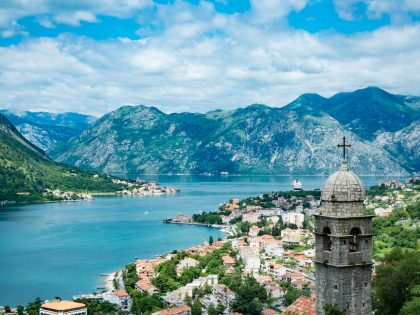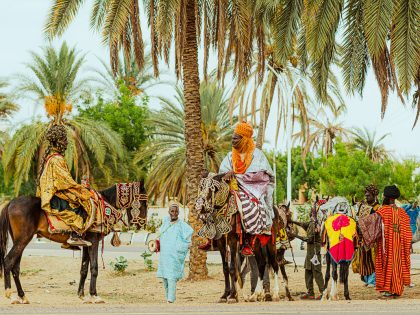Three Signs of Ghana’s Art Times
Ghana is currently experiencing a surge of contemporary performing and visual arts. Here are some notes on goings on about Accra-town.

Independence Square, Accra, Ghana. Image via Piqsels CC.
A new play, Song of the Pharaoh by leading playwright Mohammed Ben Abdallah, has been in the works for over a year, being rehearsed, workshopped, and performed at Ghana’s National Theatre in downtown Accra (image above). It initially opened 12 and 13 September and returns 1 and 2 November. The National Theatre Players and the National Dance Company, both resident companies at the National Theatre, are leading the production but it also involves collaborations from Noyam Dance Company, The National Symphony Orchestra, and a number of young and established guest artists. The performance is being fine-tuned in preparation for planning an international tour. I have been one of Abdallah’s assistant directors who is leading a team of artists in shaping Song of the Pharaoh’s dance, music, costume, and set design. Abdallah is one of the most important playwrights working in Africa today. Previous plays include Trial of Malam Ilya, Fall of Kumbi, Verdict of the Cobra, Land of a Million Magicians, and Witch of Mopti. Over the past four decades, his work has pushed the creative boundaries of theatre, linking Western and African dramatic traditions. His mentor, playwright Efua Sutherland, was the architect of Ghana’s National Theatre Movement, expanding on Anansegro — the tradition of trickster storytelling — in the 1950s and 60s to create a modern Ghanaian theatrical style. Abdallah built upon this work, coining the term Abibigro (literally African Play in Akan) to mean Total African Theatre. Abibigro has evolved over several decades by Abdallah and his students like Yaw Asare and Efo Kodjo Mawugbe (both of whom have passed away). This genre encourages artists to combine multiple African, diasporic, and European performance styles — music, dance, storytelling, comedy, dramatic narrative, experimental — into a flexible theatrical experience for the modern stage.
Song of the Pharaoh is a major new musical-dance drama that tells a story of love, incest, and betrayal, and of political and religious transformation in ancient Egypt. Its form is a modern comment on the nature of staged theatre, bringing Ghanaian music and dance together with an eclectic blend of North and West African sounds and movements through new choreographies. The narrative is framed by three storytellers taken from the Ananse storytelling tradition into the modern city as time travelers who narrate the tale and mediate between the contemporary audiences and characters who populate various worlds. The story focuses on the rise and fall of the enlightened Pharaoh Akhenaten who ruled Egypt during a time of growth and artistic flourishing. It also tells the tale of the love between Akhenaten and his childhood companion and wife, famed beauty Nefertiti. As Akhenaten gains power he must navigate family betrayals that will shape his rule and eventually change the history of Egypt. Akhenaten was a leader who encouraged new ways of thinking and creativity in the land of Kemet. He attempts to reform the religious beliefs of his kingdom by promoting the worship of Aten, a new merciful god. In the process he incurs the wrath of his uncle the high priest of the ancient god Amon. This sparks a familial power struggle that reshapes the religious and political world. Abdallah wants audiences to reflect on how and why Akhenaten has been seen as the first proponent of a monotheistic religion and linked to myths of both Moses and Oedipus. He built a new capital called the “City of Light.” During his reign, artisans, craftsmen, and common people were encouraged to think creatively. This dramatic tale is set in ancient times but uses these tales of the Pharaoh to engage existential questions of love and familial conflict, death and memory. The play will keep audiences entertained with majestic dance sequences, delicate musical numbers, and suspenseful dramatic action, but leaves viewers unsettled. If you are in Accra 1 and 2 November head to the National Theatre to watch.
II. Chale Wote Street Art Festival: The two day event held 7-8 September was organized through ACCRA[dot]Alt and featured performance art, photography, film, painting, installation art, theatre, fashion, music of all sorts, street boxing, and local cuisine situated all along Accra’s High Street from the Jamestown lighthouse past James Fort Prison and Brazil House to Ussher Fort and the old Kings way building. The name means “man/friend let’s go” but is the popular name for flip-flops. Billie McTernan wrote a lovely piece about it here on the blog. This event is exciting in how it blurs artistic work into daily life. The rising generation of artists in Accra are media-wise and street-savvy. They make stuff and they increasingly creatively work to reach new audiences and make new interventions locally and internationally.
Among the many striking artists present was the photography and performance work of Bernard Akoi-Jackson. His performance of Goldman was a brilliant disruption of daily pace and the relationship between tradition and modernity. Akoi-Jackson also displayed his photographic work in the old cells of Ussher fort prison block. Along with other installation art, films, and performance pieces art work did time inside the crumbling walls, sharing space with old prison graffiti images and writing. Fashion models/performance artists from artist/designer Afua Asona dominated the entrance to the prison. The presence of numerous young intellectual, tech-savvy photographers like Rodney Quarcoo (the images above are his), Seton Nicholas and Senyuiedzorm Adadevoh at the event highlighted the rise of this media as a crucial aspect of youth art culture in Ghana and across the continent.
Wanlov the Kubulor of FOKN Bois fame and his Sister Deborah Vanessa of Uncle Obama’s Banana fame created an impromptu performance simply through their charismatic presence on the streets of Jamestown as kids and adults laughed and joked, posing for pictures with them. Sister Deborah walked graciously down the High Street while her brother strolled next to her. Wanlov wore a necktie and an open red football jacket, no shirt, no trousers, and briefs adorned with eyes and a red foam nose sticking straight out from his groin that attracted a lot of attention. When a sudden heavy storm broke, many headed for the shelter of a drinking spot or hair salon. Wanlov ran into the street to play football with kids and teens and splash in the puddles. Seton Nicholas grabbed his camera, handed me his hat and headed into the rain to capture the pleasure of the moment.
There was a spoken word tent led by Mutombo Da Poet set up in the Brazil House courtyard in front of a mural of local hero boxer Azuma Nelson. And in the old broken down Kingsway building, a DJ tent with rotating DJs including Kobby Graham and Ben Lebrave AKA BBrave, featured deep sets intermingling local and international tracks. Graffiti artists organized by Nima Muhinmanchi Art with German graffiti artist David Bethmann were adorning the walls and floors of the building. An impromptu elegant drinking lounge was set up next to them by Rockstone’s Office, Accra’s ultra pub and lounge run by hiplife superstar Reggie Rockstone and his business savvy impresario wife Zilla Limann.
The blurring of lines between participants and audiences showed as celebrities and social media folks like Awusi Michell, Grace Ayensu, and Panji Anoff came to enjoy themselves though got drawn into various activities by performers, fashionistas, and vendors. It was an event to see and a place to be seen. For a brief measure Accra’s High Street became a total participatory theatre.
III. The Black Stars of Ghana: The Chale Wote festival highlighted the fact that there is a rising generation of artists and media folks in Ghana who are building on the legacy of older generations of painters, writers, and performers — some of whom receive recognition and some of whom continue to create amazing work in relative anonymity. An evocative series of video interviews entitled The Black Stars of Ghana, Art District featuring artists like Marigold Akufo-Addo, Wiz Kudowor, and Larry Otoo provides extensive conversations with important Ghanaian visual artists bringing recognition of several generations of painters. These videos are intense and personal, highlighting the artists’ biographies, the development of their work, and how they imagine the role of visual arts for contemporary Ghana.
Each artist is filmed in front of a canvas, colorful images, painterly worlds. Their discussions follow the narrative of the way individual artists-eccentrics-geniuses see the world in unique ways and how they externalize the life and aesthetic world in the minds through the practices of making art. In watching the videos you are left with the impression of a cohort of artists who make work out of passion, who do whatever they have to in order to find the means to focus on their aesthetic practices. And you also get a sense of how true artists try to link their work to broader social concerns and daily practicalities. Here.
